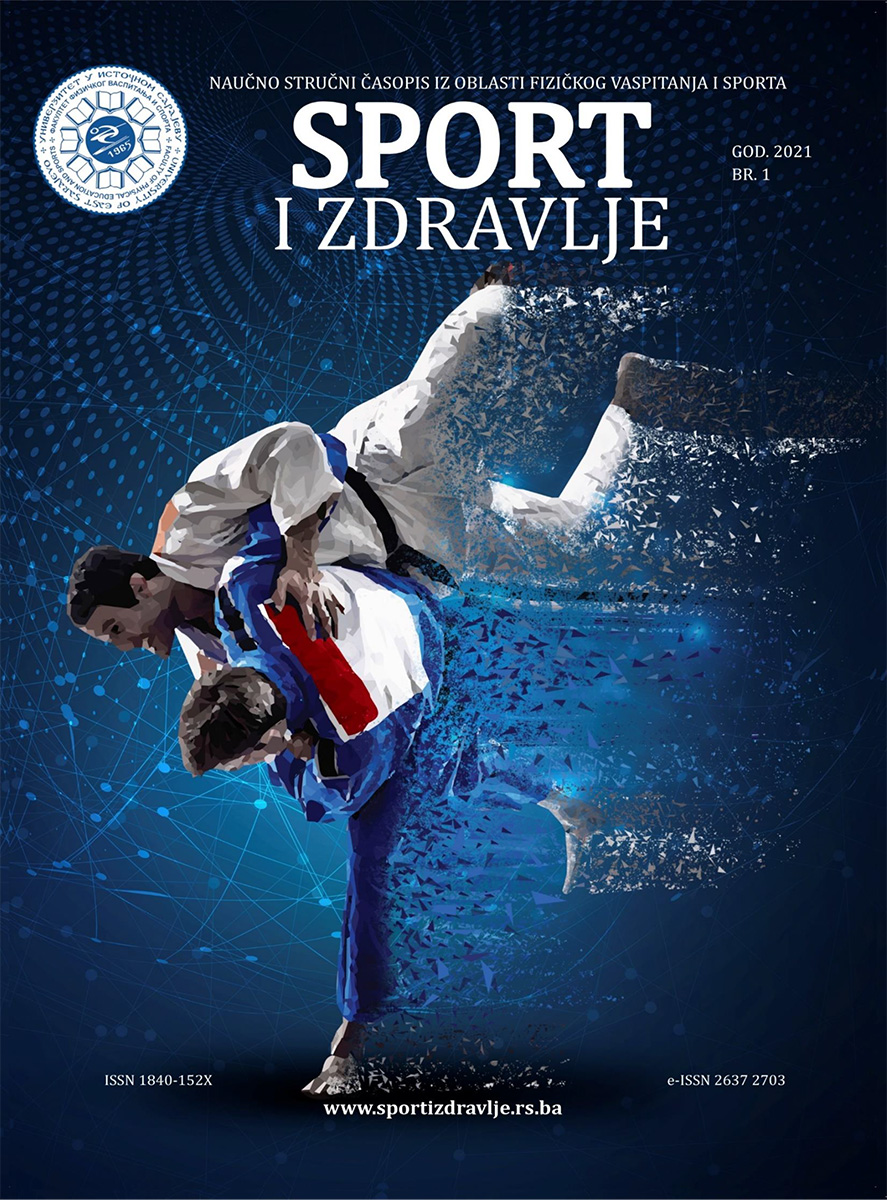STRUCTURE OF SITUATIONAL MOTOR ABILITIES IN HANDBALL
DOI:
https://doi.org/10.7251/SIZEN2101111AAbstract
Goal work is to determine the structure of situational motor skills in handball, code students of the Faculty of Sports and Physical Education in Leposavić, aged 19 to 21. By applying the method of component factor analysis inthree latent dimensions are isolated in the situational motor space: the first is responsible for the speed of movement without the ball and with the ball and handling the ball; the second for the power of throwing the ball and situational accuracy of shooting from 7 m; The results of the research confirmed the connection between isolated latent situational motor dimensions and that the speed of ballless movement with the ball, ball handling, ball throwing power and situational accuracy depend on the same regulatory mechanisms. The conclusion is that in determining the optimal anthropological model in domain kinesiological education, planning, programming and selection in handball, special attention should be paid to situational motor skills.

